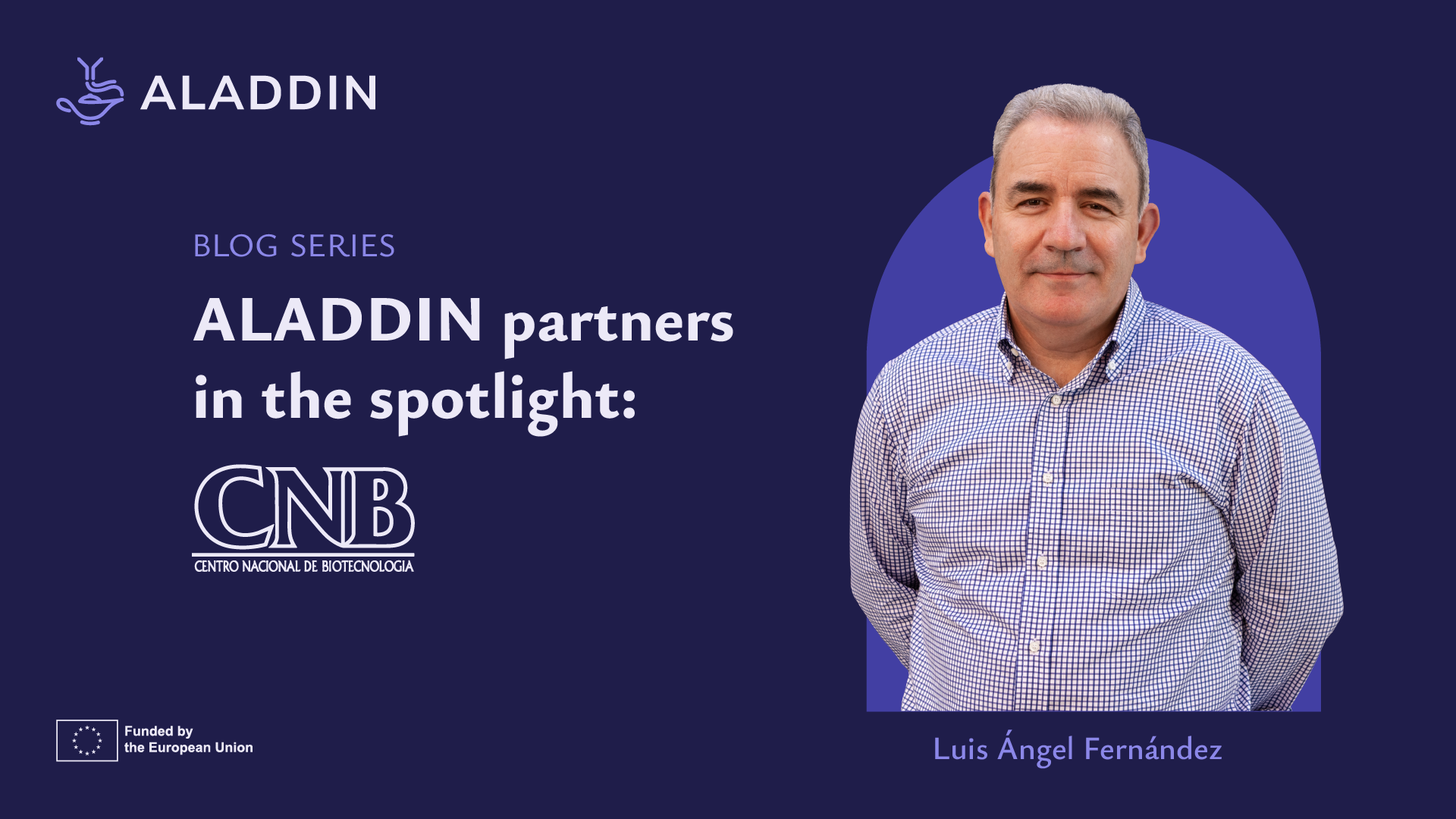ALADDIN partners in the spotlight:
CNB
To highlight the work conducted in ALADDIN by our top-notch consortium, we begin a new blog series to present our partners. For the first article of the series, we interviewed our project coordinator Luis Ángel Fernández. He explains what his team does in the project, his thoughts on the multidisciplinary ALADDIN consortium, and the uniqueness of the project approach.
Luis Ángel Fernández is a Principal Investigator at the Centro Nacional de Biotecnología (CNB-CSIC) in Madrid, Spain, where he runs the Bacterial Engineering for Biomedical Applications research group. Since January 2024, Fernández has led the ALADDIN project, funded by the European Innovation Council (EIC)’s Pathfinder Open 2023 programme, as the project coordinator.
The goal of ALADDIN is to accelerate the current process of nanobody discovery and validation. The project consortium is developing a unified platform that integrates different technologies related to nanobody discovery, from the identification of tumour targets to the validation of nanobodies against these targets by in vivo testing in zebrafish embryos.
Fernández’s team at the CNB has long been working on expressing nanobody immune libraries in bacteria. They saw the need to improve the process, which sparked the idea for ALADDIN. All that was left was to find the right partners to bring the necessary parts together into the project.
A holistic approach to therapeutic antibody discovery
In ALADDIN, the CNB team focuses on nanobody screening and selecting good candidates from non-immune libraries and in vivo maturation systems. This biological part of the project, conducted by Fernández’ team, is integrated with the use of machine learning and microfluidics to speed up the selection process, tasks that are conducted by the project partners at the Hebrew University of Jerusalem (HUJI) and the International Iberian Nanotechnology Laboratory (INL), respectively.
The findings of this first phase of the project will then be put to the test to see whether the selected antibodies work against cancer tumour targets identified by the teams at the Instituto Investigación Sanitaria Fundación Jiménez Díaz (IIS-FJD) and the Instituto de Salud Carlos III (ISCIII). This is done by transplanting samples from pancreatic and colorectal cancer patients in zebrafish embryos, a task led by the team at Linköping University, enabling testing the effectiveness of the antibodies without using higher vertebrates like mice and accelerating the analysis of the treatment outcome. Finally, the InCellia team part of ALADDIN will use mathematical models to extract data on the nanobody candidates’ performance. All of this information will feed the technology transfer plan of the project developed by Zirka InnoTech.
Each ALADDIN partner has an important role in making the project a reality. The key lies in engaging with a holistic approach and bringing together expertise from multiple disciplines to tackle the current challenges of antibody discovery.
“All these ideas from different researchers came together in the ALADDIN proposal. It was a long process but a worthy one,” Fernández says.
From the laboratory to real-life applications
When asked about the project’s innovation potential, Fernández says it would be easier to pinpoint what isn’t novel in the project than what is. Though some of the approaches used in ALADDIN aren’t new, the way they are used and combined makes the project stand out.
As an example, Fernández uses his team’s efforts in the project.
“Selections from large antibody libraries have been done before, but not by introducing in vivo affinity maturation in E. Coli bacteria. This is what we do in ALADDIN.”
The objective of the project is to improve therapeutic antibody discovery, which can have a profound impact on cancer treatment. The potential benefits of the project outcomes don’t, however, stop there, as antibodies are used increasingly for treating infectious diseases and developing diagnostics tools.
“Although our focus is on cancer therapeutics, the project can impact a wide range of applications,” Fernández confirms.
Multidisciplinarity as a key to project success
When asked about the multidisciplinary nature of the project, Fernández emphasises how necessary it is for achieving the project goals.
“All of the different expertise in our consortium, from molecular biology and cancer therapeutics to computer science, mathematics, and microfluidics, is needed for the success of the project.”
Fernández has full trust in the expertise each partner brings to the project.
“Time flies, and we are aware of the challenges ahead. But I see us accomplishing our goals. We can develop a proof of principle to accelerate the process and produce therapeutic nanobodies in a uniform platform incorporating all of these elements.”

